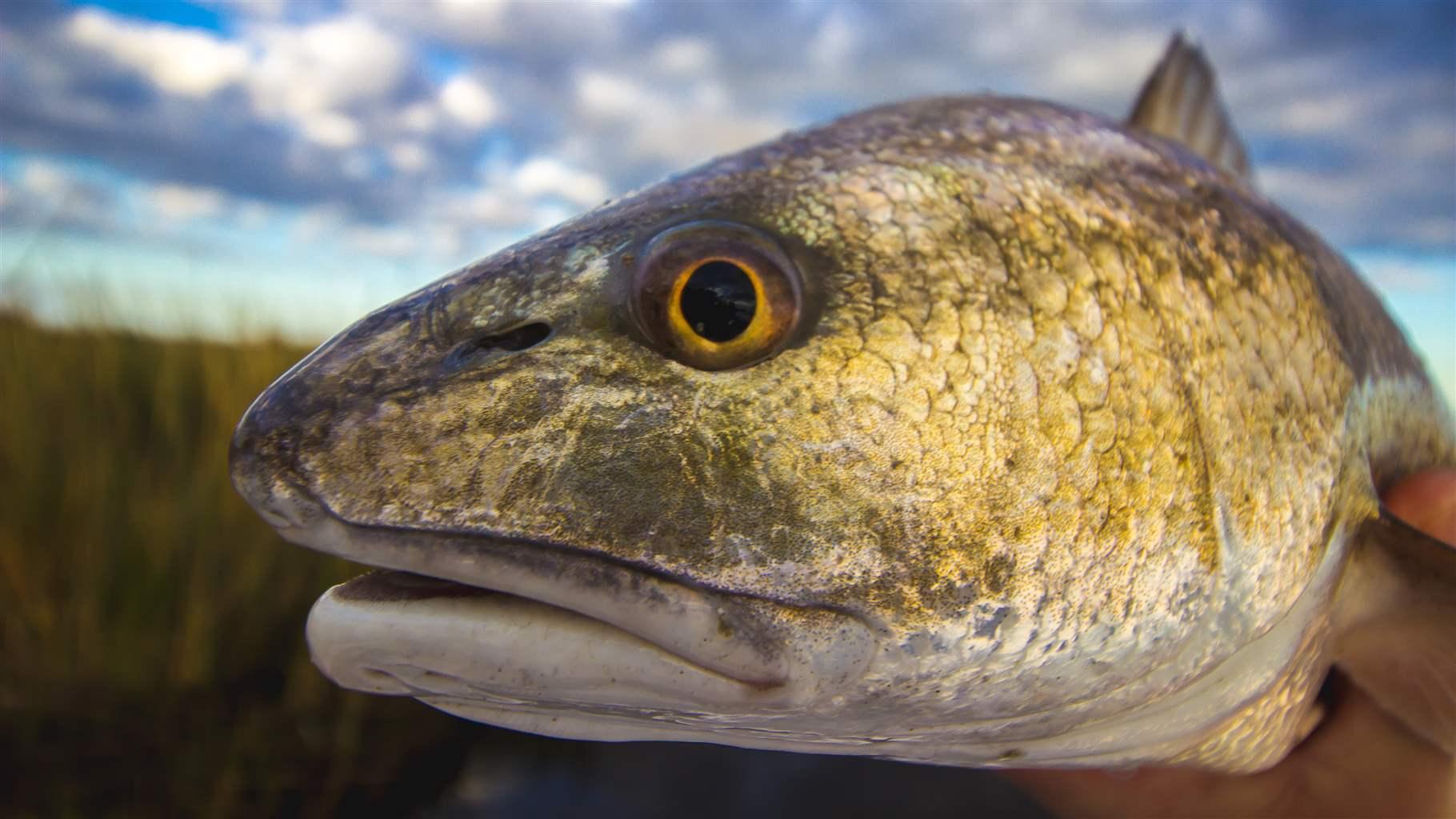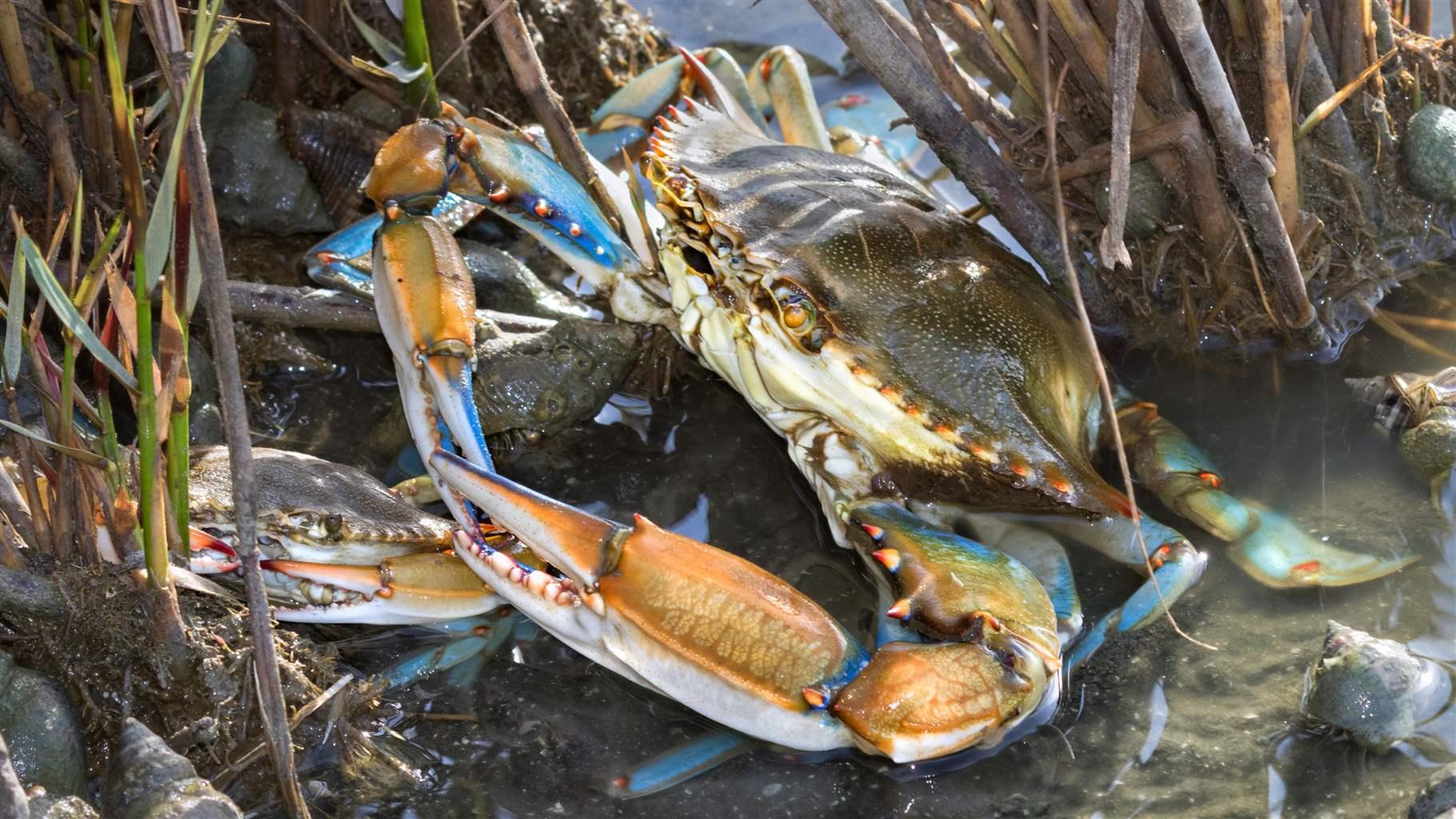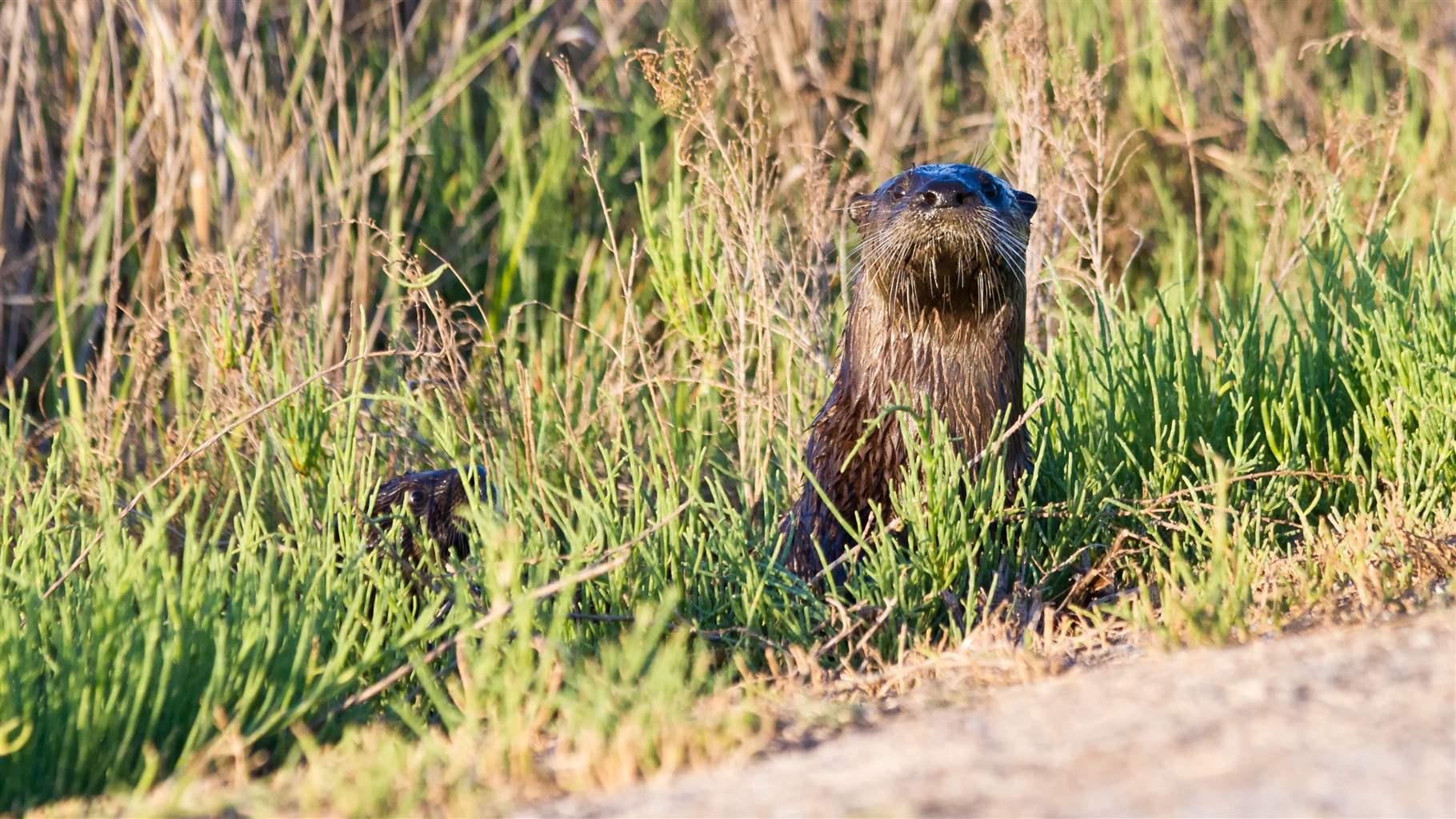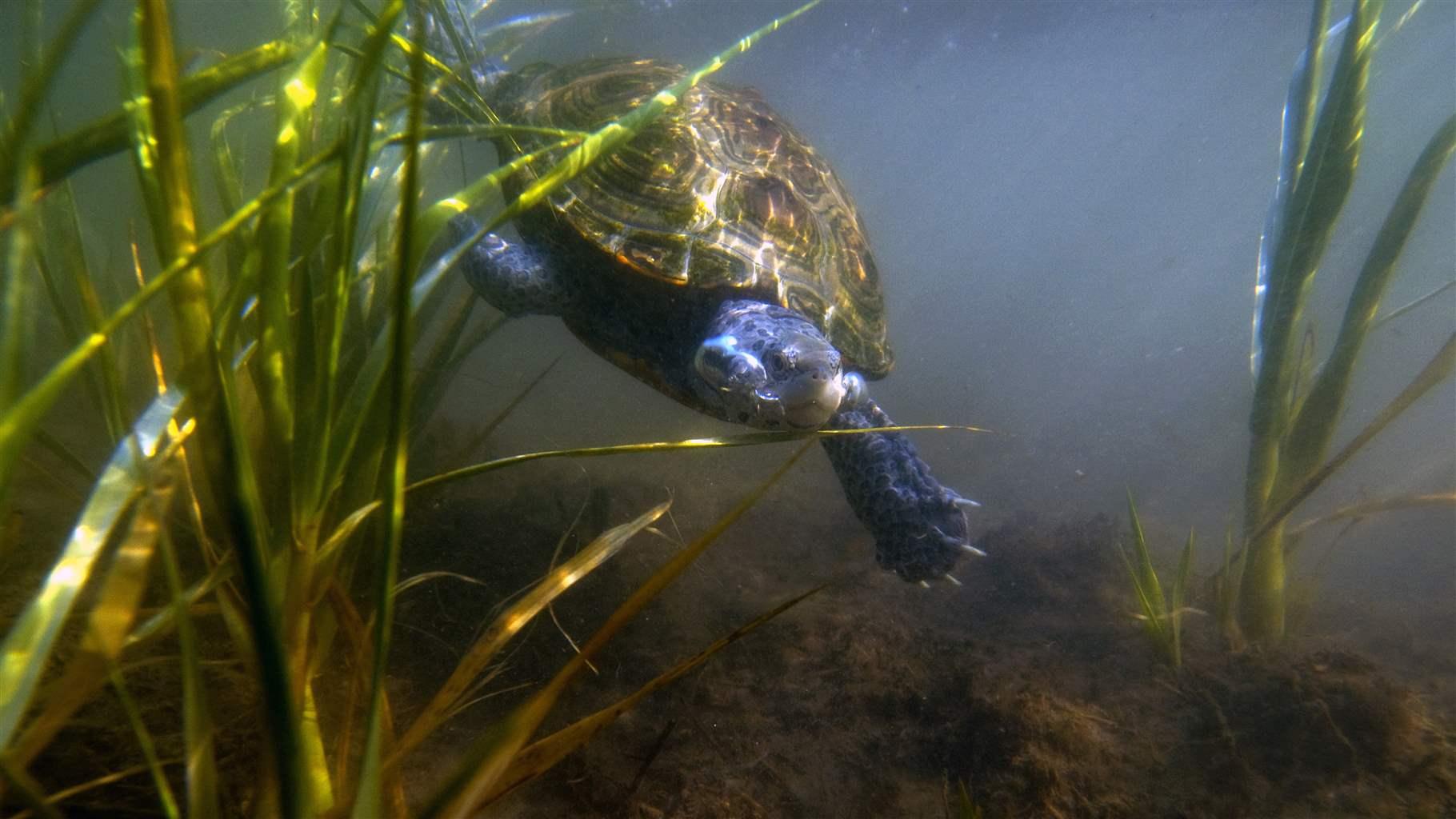6 Types of Wildlife and Plants That Thrive in Salt Marshes
Tidal wetlands host fish, birds, and other animals that support coastal economies
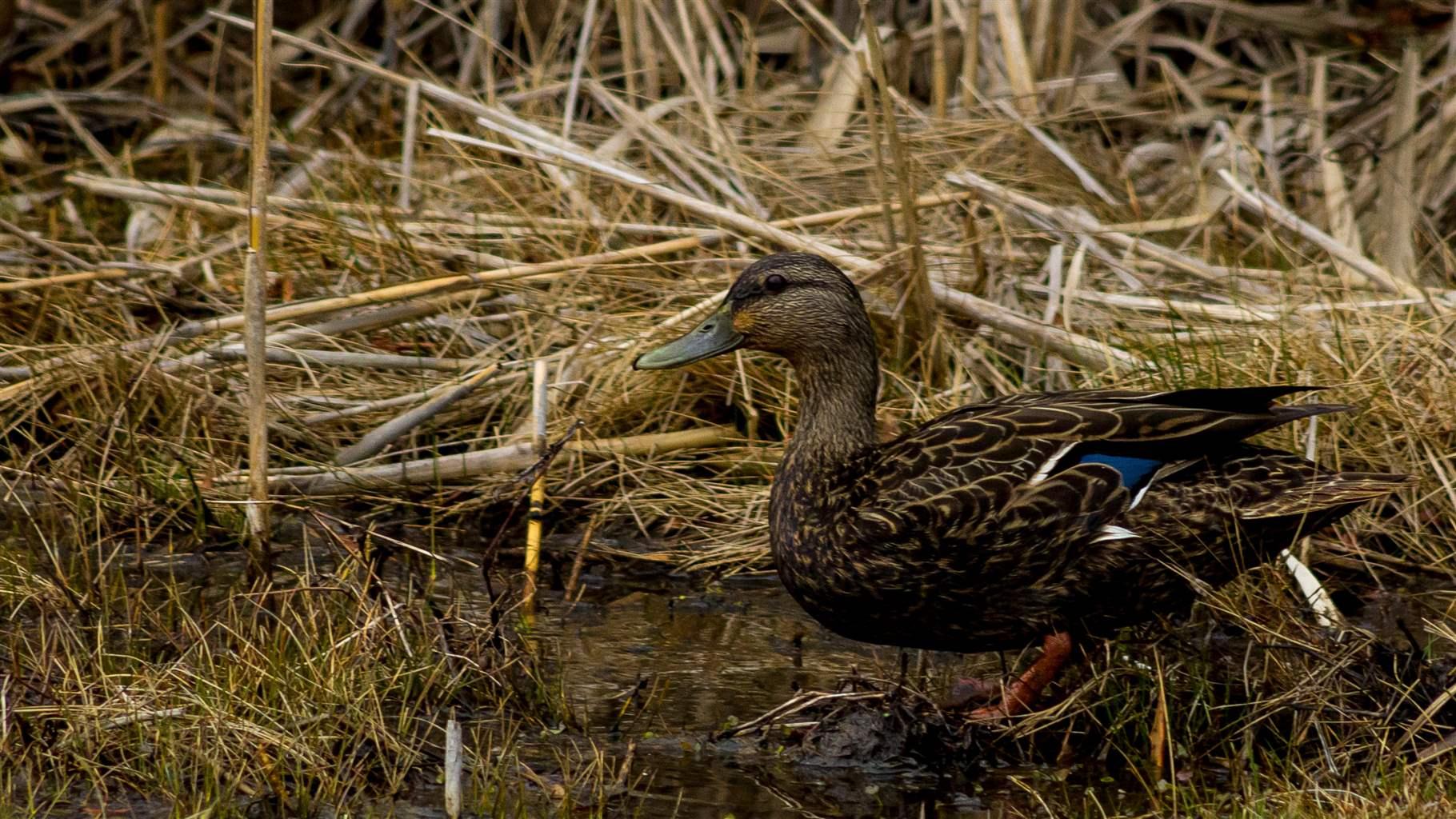
Life in salt marshes is good for birds, fish, and a variety of other animals that nest, breed, eat, and flourish in these salty, grassy wetlands.
Conserving this vital habitat, which floods and drains with the tides, is important for coastal economies because wildlife supports fishing, birding, hunting, and the businesses that serve and benefit from those activities. In fact, coastal tourism and recreation, such as boating, fishing and ecotourism, supported nearly 25,000 businesses, more than a half million jobs, and about $2.2 billion in wages for South Atlantic states in 2017, according to the National Oceanic and Atmospheric Administration.
Here are six categories of animals and plants that need salt marshes:
- A variety of bird species—ranging from raptors to songbirds—are drawn to salt marsh grasses and the fish and insects that live among the blades. Some visitors to the salt marshes include the osprey, bald eagle, black duck, great blue heron, marsh wren, belted kingfisher, and clapper rail, the threatened Eastern black rail and wood stork, and the salt marsh sparrow, which is under review for listing on the federal Endangered Species Act.
- Finfish and shellfish species depend on salt marshes and tidal creeks for breeding, feeding, and nursery areas. Some important commercial and recreational targets include blue crabs, white and brown shrimp, spotted seatrout, and redfish.
- Small invertebrates, such as marsh periwinkles, mud snails, fiddler crabs, and saltmarsh grasshoppers, thrive in the peaty habitat and are a vital part of coastal food webs.
- Mammals, including the bottlenose dolphin, otter, mink, raccoon, and marsh rabbit, come to salt marshes to feed, both on prey and the seeds and leaves of marsh vegetation.
- Reptiles live in salt marshes as well, moving amid tall grasses and swimming in tidal creeks. Marsh reptiles include diamondback terrapins, sea turtles, salt marsh snakes, and occasionally alligators.
- The salt marsh grass known as smooth cordgrass dominates the lower marsh ecosystem, which is closest to the sea. The plant's narrow, tough blades and special glands that secrete excess salt make it well adapted to brackish water. Smooth cordgrass provides shelter for many fish and small animals. Its well-anchored root system helps to buffer coastlines from erosion and flooding and traps sediment, helping to clean water. Other plants—such as needlerush, saltgrass, salt meadow cordgrass, and succulents including saltwort and glasswort—dominate the higher marsh ecosystem, which is closest to the land.
Life thrives in salt marshes, making them some of the most important ecosystems on Earth. Salt marshes support fishing, tourism, and other businesses that are vital to coastal economies. Plus the marshes help to maintain good water quality that other valuable coastal habitats need to survive, including oyster reefs and seagrass. Communities should work together to develop plans that restore, protect these vital habitats and allow them to adapt to changing environmental conditions.
Holly Binns and Joseph Gordon are project directors with Pew’s conserving marine life in the United States project.
